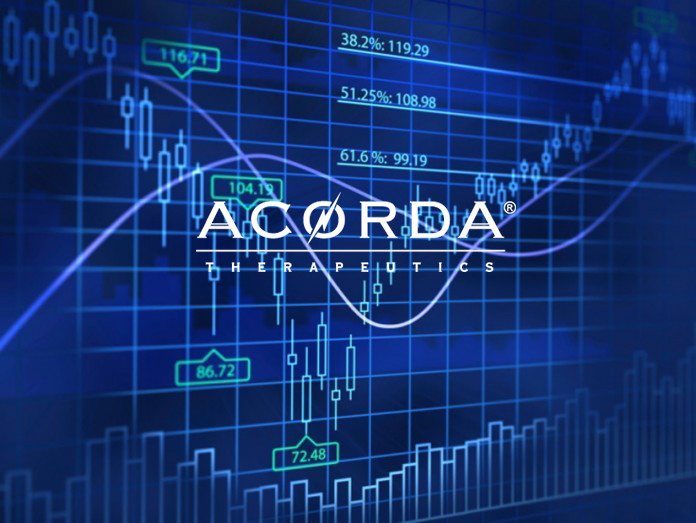
Acorda Therapeutics, Inc. (NASDAQ:ACOR) just paid $363 million for one of Finland’s most promising biotech companies, Biotie Therapies Corp. (NASDAQ:BITI). The deal gives Acorda access to (and control over) Biotie’s pipeline of clinical stage candidates, as well as its one already approved product. The already approved product, Selincro, an alcohol dependence therapy, is currently marketed under license by another Finnish company, and generates a little less than $14 million a year for Biotie. As such, for the $1.2 billion Acorda, it’s reasonable to conclude the company is looking at Biotie’s pipeline as providing the lion’s share of the valuation. The most advanced candidate in said pipeline is tozadenant, an immune therapy treatment with a target indication of Parkinson’s disease.
Parkinson’s is a tough condition to treat, and all current therapies are symptom targets, rather than addressing the underlying condition and working towards a cure. The current standard of care hasn’t been improved upon in two decades. This makes Acorda’s latest buy a risky one, as the failure to advance this area of therapy is attributable to the complexity of neurodegenerative diseases in general, and the difficulty associated with demonstrating efficacy of treatments. Of course, a treatment that works has a huge potential market. Analysts expect Parkinson’s disease treatments to generate more than $34 billion during 2018, and the company that first hits markets with a cure puts itself inline to redirect a large portion of these revenues towards its own balance sheet. With this in mind, what exactly is tozadenant, and what sort of timeframes are we looking at from a clinical development perspective?
First then, the science. Tozadenant is an adenosine 2A (A2A) receptor inhibitor, but before we go into that, let’s quickly look at the disease itself. Parkinson’s is caused by two things – the degeneration of the basal ganglia in the brain, which is the part of the brain associated with movement and motor function, and a lack of dopamine. The combination of these two factors lead to the shaky motor and coordination symptoms associated with the disease. Tozadenant acts as a sort of double pronged attack on the dopamine factor. First, through inhibition of the A2A receptors, it reduces the amount of adenosine in the central nervous system. When adenosine is reduced, the CNS produces more dopamine to counteract this reduction. That’s step one. Step two, by blocking the process associated with the A2A receptor, the drug increases what’s called the potentiation of the dopamine that already exists. Potentiation is another word for strength – so tozadenant increases not just the amount of dopamine present in the CNS, but also its strength. At least, that’s what Biotie (and now, Acorda) hypothesizes.
So that’s the science; what evidence do we have that supports this hypothesis? Well, there’s an ongoing phase III, but we’ve not yet got any results from that, so we must track back to a phase IIb for insight. The trial kicked of back in 2011, but due to the nature of the disease, Parkinson’s trials can take a few years to complete. Data hit press in July 2014, and we got word of success in a range of measurement areas including a decrease vs. placebo in ‘off’ time, an increase in ‘on’ time, and an improvement in what’s called The Unified Parkinson’s Disease Rating Scale (UPDRS), which is the commonly accepted baseline score for measuring Parkinson’s decline and progression. In short, things look good based on that trial.
What are we looking at from a timeframe perspective? The phase III on which Acorda hopes to base its NDA kicked off in July last year, and has enrolled patients across the US, Europe and Canada. A company need circa 900 patients to form a pivotal data set in most neurodegenerative conditions, and this one has 450 initially. Top line is expected next year (latter half 2017) and if this data meets its endpoints, the company will immediately kick off a second open label with a further 450 patients, meeting the 900 prerequisite. Milestones include interim analysis that should hit press H2 this year, topline at H2 2017, and the initiation of the final stage that should take about 18 months to complete. We’re probably looking at an early 2019 NDA submission, assuming all goes to plan.
Of course, we’ve seen some high profile candidates reach phase III and fail to emulate the efficacy of their respective phase IIs – Merck & Co. Inc. (NYSE:MRK) shareholders will be all too aware of this reality – so while it looks promising, nothing is guaranteed.
And there we go. A buyout that many are saying is an extremely risky way to spend $363 million, in a space with a graveyard of failed candidates. It may, however, be an acceptable level of risk for a double digit billion-dollar reward. One to watch.




